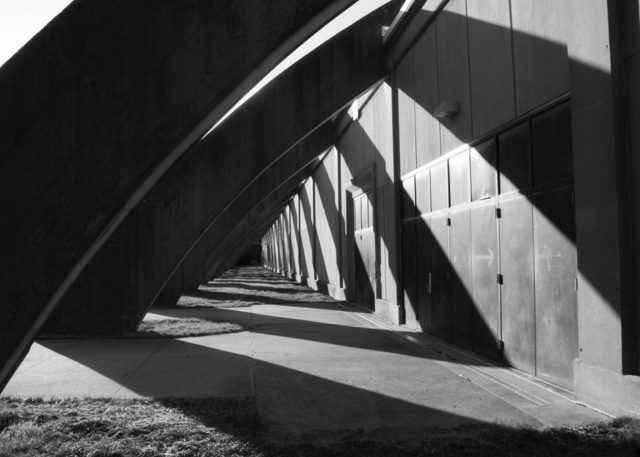
The arches on the side of an IU athletic building casted a shadow that created an interesting pattern. The lighting captured was so dramatic because it was taken around sunset, other known as golden hour. Credit: Jaclyn Morganroth
Chiaroscuro and key
This section of the chapter referred to lighting and how the contrast between light and dark shadows in a photo adds a dramatic effect to the composition. The chapter noted how this concept is identified as “one of the most expressive and important means of composition.” This is because lighting creates the structure of an image and draws the viewers eye in immediately to points of attention that the light has created in the scene. Lighting does not only create the structure of a photograph and draw the viewer in, but it also creates the entire mood for the scene. The chapter specified highlights and shadows as the forms of light that contribute most to the mood of the photograph. When a photo is in black and white like the photo I chose below, it is much easier to understand contrast and brightness when adjusting the tones of an image. A photo can be high contrasted where it is super bright or more low-key where the image is darker. Playing around with the different light tones can elevate the mood of your photo and overall tone. Deciding how to contrast and brighten your photo depends on the characteristics of the scene, then way the scene is lit, and the photographer’s interpretation. This section also talked about caustic light patterns, which are formed when light is strongly reflected or refracted onto a surface, which is what I think my photo below resembles well.
